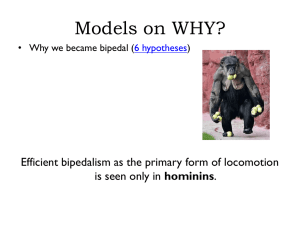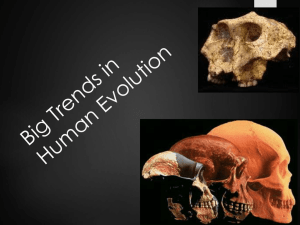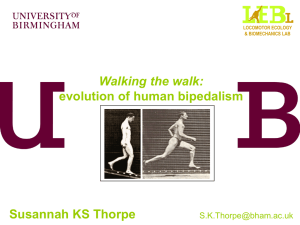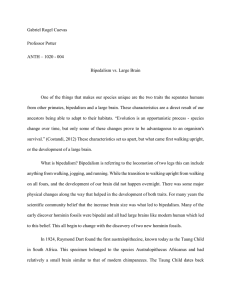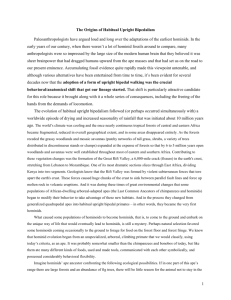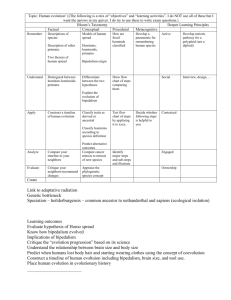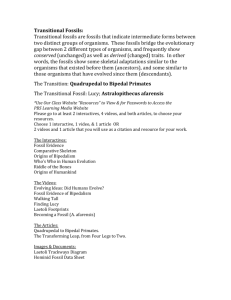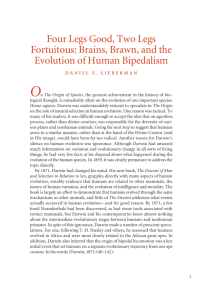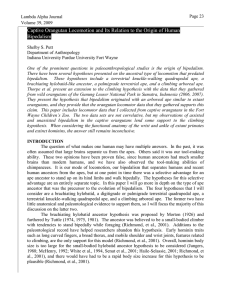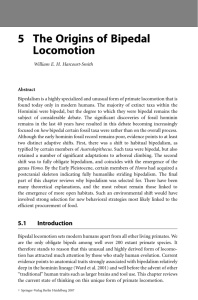Lecture 16
advertisement
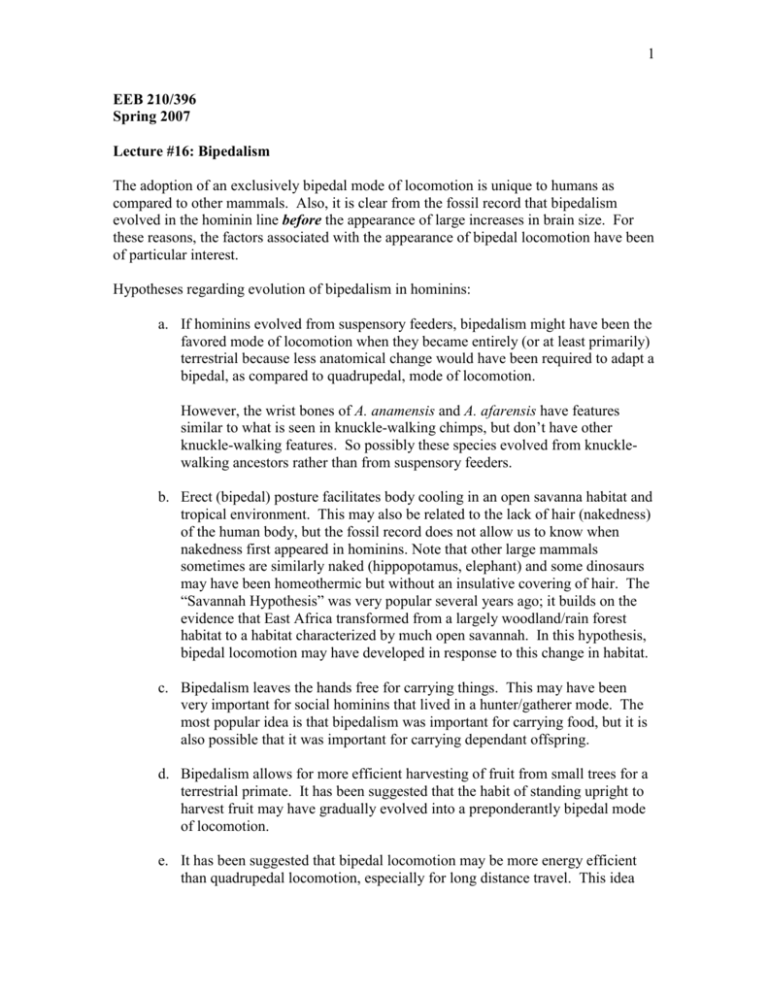
1 EEB 210/396 Spring 2007 Lecture #16: Bipedalism The adoption of an exclusively bipedal mode of locomotion is unique to humans as compared to other mammals. Also, it is clear from the fossil record that bipedalism evolved in the hominin line before the appearance of large increases in brain size. For these reasons, the factors associated with the appearance of bipedal locomotion have been of particular interest. Hypotheses regarding evolution of bipedalism in hominins: a. If hominins evolved from suspensory feeders, bipedalism might have been the favored mode of locomotion when they became entirely (or at least primarily) terrestrial because less anatomical change would have been required to adapt a bipedal, as compared to quadrupedal, mode of locomotion. However, the wrist bones of A. anamensis and A. afarensis have features similar to what is seen in knuckle-walking chimps, but don’t have other knuckle-walking features. So possibly these species evolved from knucklewalking ancestors rather than from suspensory feeders. b. Erect (bipedal) posture facilitates body cooling in an open savanna habitat and tropical environment. This may also be related to the lack of hair (nakedness) of the human body, but the fossil record does not allow us to know when nakedness first appeared in hominins. Note that other large mammals sometimes are similarly naked (hippopotamus, elephant) and some dinosaurs may have been homeothermic but without an insulative covering of hair. The “Savannah Hypothesis” was very popular several years ago; it builds on the evidence that East Africa transformed from a largely woodland/rain forest habitat to a habitat characterized by much open savannah. In this hypothesis, bipedal locomotion may have developed in response to this change in habitat. c. Bipedalism leaves the hands free for carrying things. This may have been very important for social hominins that lived in a hunter/gatherer mode. The most popular idea is that bipedalism was important for carrying food, but it is also possible that it was important for carrying dependant offspring. d. Bipedalism allows for more efficient harvesting of fruit from small trees for a terrestrial primate. It has been suggested that the habit of standing upright to harvest fruit may have gradually evolved into a preponderantly bipedal mode of locomotion. e. It has been suggested that bipedal locomotion may be more energy efficient than quadrupedal locomotion, especially for long distance travel. This idea 2 has been the subject of much debate. In thinking about the origins of bipedalism, one must consider not so much the question of the relative efficiency of bipedal locomotion in present day humans as compared to the locomotion of quadrupedal mammals, but rather the relative efficiency of bipedal vs. quadrupedal locomotion in the earliest bipeds. As hominins were evolving, African habitat was changing from forests to drier savanna: a. need to maintain food intake as resources were becoming more widely separated b. group size important 1. large groups better at defending resources from other groups (intergroup competition) 2. large groups experience more intragroup competition Isbell and Young proposed the hypothesis that two different solutions to these conditions (i.e., inter- and intra-group competition for resources) evolved in chimps and in hominin lines, respectively: a. fission-fusion social system of chimps and bonobos---travel in larger groups when intergroup encounters likely or when resources are more abundant; travel in smaller groups when resources more scattered b. earliest hominins may have retained the ancestral social organization of cohesive, multi-female groups, but evolved bipedalism as a more efficient locomotion for long distance travel---this may also have allowed evolution of larger body size If the hypothesis of Isbell and Young is correct, it challenges whether chimps are really good models for understanding early hominin social organization.
